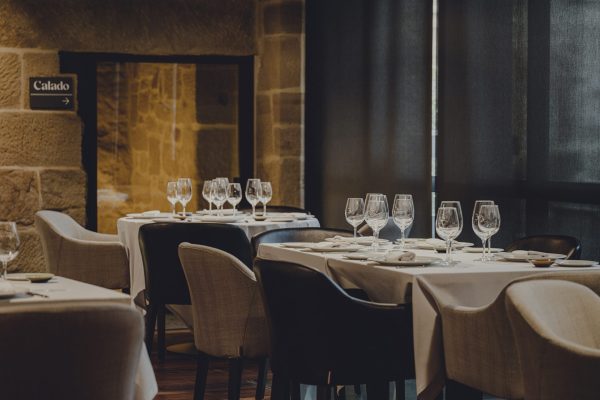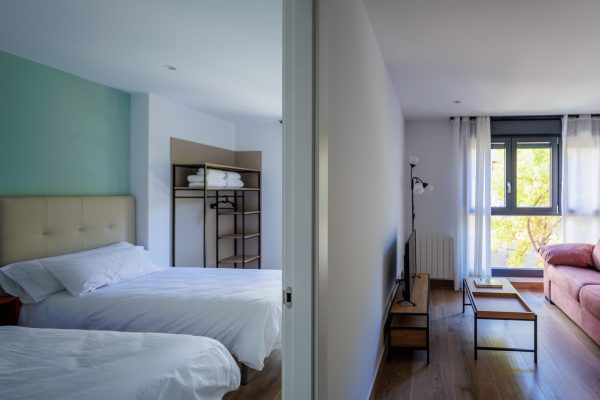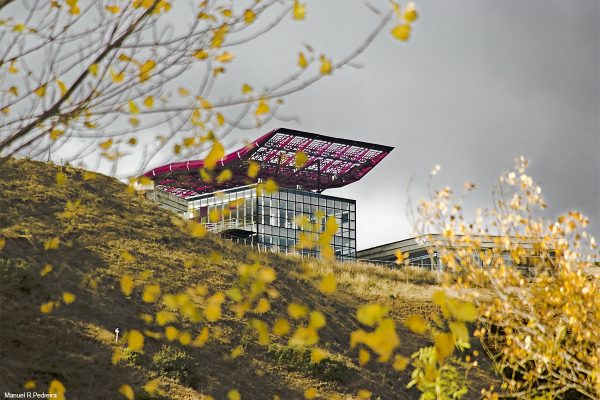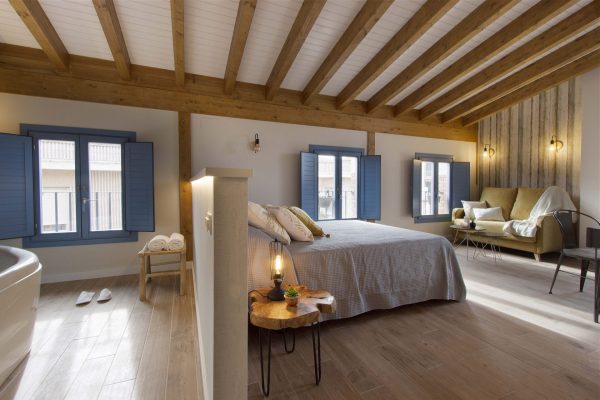The Rioja has been inhabited since time immemorial, and every era has left its mark on our land.
In this post you can discover an important part of the heritage and cultural wealth of La Rioja through 7 of its monasteries more impressive.
A monastery is not just a building, it is a a sacred place which for some reason was chosen to erect the majestic temple we can see today.
The monasteries are history, strategic places of war, wisdom and mysticismThe project has been a great success, but without the impetus of its founders it would not have been possible to carry it out, and the waste of resources is sometimes so ineffable, can only be understood from the most spiritual part of the human being.
1. Monastery of Valvanera the Patron Saint of La Rioja

The Monastery of Valvanera is located in in the middle of nature at an altitude of 1000 metres above sea level. Valvanera being the Patron Saint of La Rioja.
The history of its foundation is recounted in the Latin Historywritten in 1419 by Rodrigo de Castroviejo (Abbot of Valvanera), as a translation of a 12th century Latin text probably written by Gonzalo de Berceo.
He says that the thief Nuño Oñezhearing the prayer of his intended victim, he repented of his crimes, commending himself to the Virgin Mary.
"One day during his prayers, an angel appeared to him, telling him to go to the valley of Valvanera in search of an oak tree that stood out from the othersAt the foot of which a fountain sprang up and which contained several swarms of bees, where he found an image of the Virgin Mary. He went there with the cleric Domingo de Brieva and found the image. Between the two of them they moved it to a nearby cave in a rocky outcrop, where they would build the first hermitagelocated in the current neoclassical chapel of Santo Cristo to worship the Virgin".
This discovery would give rise to the Monastery of Valvanera, as the image would gather around the image of the monastery. group of hermits who over time adopted a regular life inspired by the Rule of Saint Benedict, the first Abbot of the Monastery being Don Sancho in 990.

The first Visigothic church was built in the 10th century with the arrival of the first hermits, it would be succeeded by the other pre-Romanesque consecrated in 1073. And behind it was built a Romanesque church. The is from the late Gothicfrom the end of the 14th century.
Throughout the 16th century, numerous reforms were carried out The building of an abbey chamber, the access stairs, the library, the refectory and new cells, among others, were built on the cloister building.
In the 17th century, the new porter's lodge, the new kitchens, and one of the most characteristic features of the monastery, the arcade gallery of the south façade.
The doorway on the south façade, and the current entrance to the guesthouse, was built during the renovation of 1763.
Between 1835 and 1883, however, the monastery was abandoned as a consequence of the disentailment of Mendizábal.
From the Monastery of Valvanera a beautiful circular route of 4.5km affordable for everyone to enjoy the surrounding nature.
As a curiosity, every year on the last Saturday of April the The Valvanerada a walk that leaves Logroño at 8pm and covers the 63.2 km that separate the city from the Monastery.
2. Monasteries of Suso and Yuso, the cradle of Castilian Spanish.

The Monasteries of Suso and Yuso have been declared World Heritage by UNESCO in 1997, for historical, artistic, religious, linguistic and literary reasons.
The Monastery of Suso is the older of the two, built at the end of the 6th century from the cave where the the hermit Saint Millan died in 574.
It was in this monastery where a monk wrote the Emilian GlossesThe first annotations in the margins of the pages are written in Latin. These annotations were written in the Romance language and the first annotations written in Basque also appear, which is why they are considered to be in the Basque language. cradle of Castilian and Basque.
He also lived in this monastery Gonzalo de Berceothe first poet of known name in Spanish.
Reference can be made to three stages in the construction of the Monastery of Suso:
A first stage of the Visigothic Cenobio of which the walls and several arches are preserved. A second Mozarabic stage The entrance gallery and the main nave of the church, in the Caliphate style with horseshoe arches, date from the first half of the 10th century. And a third stage of the Romanesque extension on the occasion of the sanctification of San Millán in 1030.
In the "portaliello" of the Monastery of Suso, you can also find the sarcophagi of the Seven Infantes de Lara.
For its part, the Monastery of Yuso The largest of its kind was ordered to be built in 1053 by King García Sánchez III of Navarre "he of Nájera".

"The history of its foundation is linked to the legend which tells that when Millán died, his disciples buried him in his cave, and the Monastery of Suso grew up around it. However, the Navarrese King García III wanted to take the mortal remains of the Saint to his recently founded Monastery of Santa María La Real. Thus, the 29 May 1053 They placed the remains of the saint in an ox-drawn cart and set out on their journey, leaving the monks who lived there desolate. However, when they reached the plain, the oxen stopped and would not walk again. The king and the whole retinue interpreted this as a miracle, that San Millán was imposing his will on the monks. to be reburied there. It was then that the king ordered the construction of the new monastery, which was called Yuso (below), as opposed to the one above (Suso)".
The Monastery of Yuso has one of the best libraries in monastery Spain to which are added the collection of up to 30 cantorials weighing between 40 and 60kg each, as well as important codices.
As a curiosity, it is worth noting that every early spring and autumn, around 21 March and September, the equinox. This is the best time to fix the cardinal points. At about a quarter past six in the evening at the monastery of Yuso, the ray of light enters through the rose window at the back of the church, passes through the circle that crowns the transept and hits the geometric centre of the church. This marks the perfect orientation of the headwaters towards the east.
3. Monastery of Santa María La Real | Kingdom of Nájera

Historically, the Monastery of Santa María La Real of Nájera is, together with the monasteries of Yuso and Suso de San Millán de la Cogolla, the most important in the whole region, since Nájera was the capital of the Kingdom of Nájera between 923 and 1076. It was the cradle of the Kingdoms of Navarre, Aragon and Castile.
"In 1044, the King of Navarre, García Sánchez III, while hunting for falconry, found a small chapel with the Virgin, a bouquet of lilies, a lamp and a bell. Due to the triumphs in successive wars, he ordered the construction of a new chapel. the primitive temple to the Virgin of the Cave which inaugurates in 1052".
The present church was built between 1422 and 1453 in the style of the flowery gothic.
The cloister of the knights was built between 1517 and 1528 and has 24 arches. An upper cloister was built over it in 1578.
The list of historical figures buried in the monastery more than thirty, most of whom belonged to royalty. In the monastery we find the Royal Pantheon with the tombs of the kings of Nájera-Pamplona, the Infants' Pantheon and the Pantheon of the Dukes of Nájera.
4. Monastery of Nuestra Señora de Vico in Arnedo

The Cistercian Monastery of Ntra Sra. de Vico is located 4 km from the Rioja town of Arnedo. 1456 by Fray López de Salinas.
"It tells the Legend* has it that around the 10th century there was a colony of Muslims in this vicus (rural village), governed by a khan. One day, the Virgin appeared to him and asked him to convert to Christianity and to build in that place a sanctuary to worship him. "*
There were hermits in the area, and the image of the the Virgin of Vico is RomanesqueThe first manuscript citing the shrine dates from the 13th century.
The earliest remains preserved in the monastery are the church ruins and the convent buildings, which surround a two-storey cloister with a central courtyard. The church, from the 16th to the 18th centuries, has a single nave and its sacristy was located in the space that has been fitted out as a museum. It is in the style of the late gothic, renaissance and baroque. Almost all of it was rebuilt and refurbished in the 19th and 20th centuries, so the exterior appearance of the complex is modern.
Since its foundation and until the disentailment of 1836, the monastery of Vico was a convent Franciscan. After years of looting and deterioration, in 1844 the politician Salustiano de Olózaga bought the building and converted it into a palatial residence. His granddaughter, in 1953, returned it to the Franciscans, who established a seminary.
It is currently inhabited by a community from the Cistercian Order of the Strict Observance (Trappists). It is a Religious Order of the Roman Catholic Church of monks and nuns that has its origins in 1098.
You can access by car to the car park inside the walled enclosure of the convent, which, as the signs indicate, closes automatically at 10 pm.
From there you can walk to the entrance to the convent and hermitage which apparently gave rise to the monastery.
5. Monastery of La Piedad in Casalarreina

The construction of the convent began on 10 April 1514 in Elizabethan Gothic and Renaissance Plateresque style. As a result of the decision of a bastard brother of the Fernández de Velasco family, Don Juan, who, as his brothers had a palace here, decided to build a monastery.
It has church and cloister Gothic with a square floor plan and double height.
The church was consecrated on 13 March 1522, on the occasion of the visit of the pope elect Hadrian VIwho spent the night in Casalarreina on his way to Rome.
Despite its single nave, the interior of the church is spacious and bright. In the nave and in the niche-shaped side chapels, which are connected to each other, there are further Baroque altarpieces and a small Plateresque altarpiece. On the floor of the hall, a marble slab belonging to Juan Fernández de Velasco proclaims in an epitaph composed in golden letters: "O Jesus, do not look upon my woes, for do not forget your name".
Today, it is a monastery of Dominican Contemplative nuns.
In Casalarreina we recommend you our host La Vieja Bodega for lunch or dinner.
6. Monastery of La Estrella in San Asensio
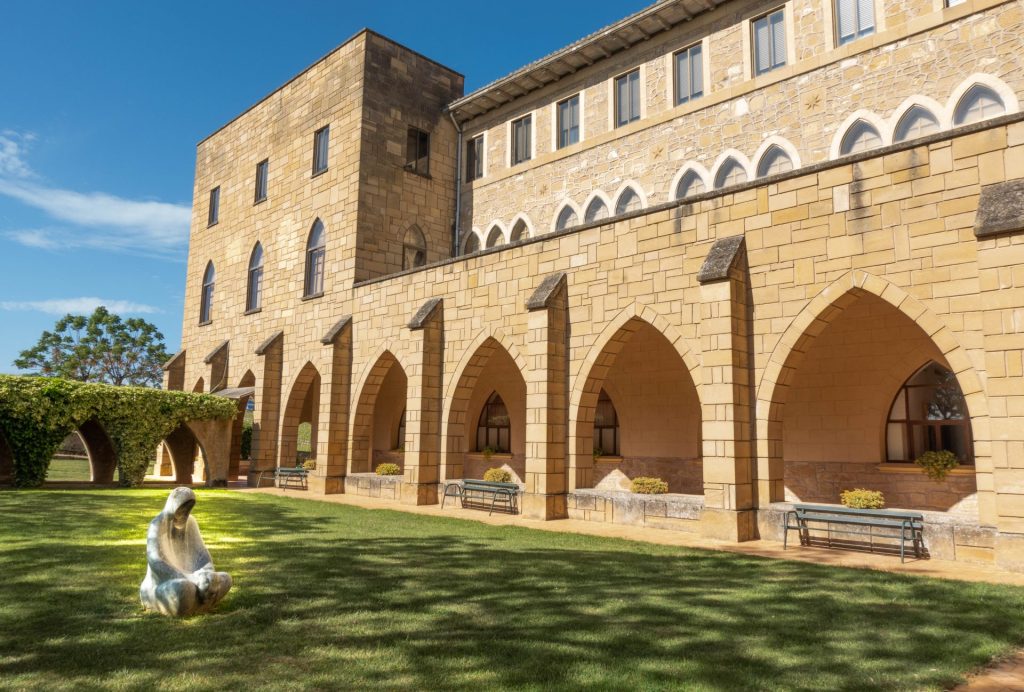
In 1060, Sancho Garcés, King of Pamplona, donated the hermitage of Santa María de Ariceta to Nuño, Bishop of Armentia in Alava. A few years earlier, according to the chronicles, the following happened "the appearance of the image of Our Lady on an oak tree engraved with a star"..
The original hermitage of Aritzeta was equidistant from the prodigy oak and a spring, which served as a source of relief for pilgrims. Hermits took care of the hermitage until around 1403, when the Hieronymite monks of the Monastery of San Miguel del Monte in Burgos officially took charge of the custody of the hermitage by order of Juan de Guzmán, bishop of Calahorra and La Calzada. In 1410, the monks, provided with a papal bull, carried out the transfer. Aritzeta would be the monastery, and San Miguel would serve as a farm and resting place.
The Sanctuary of Santa María de la Estrella, from gothic and neo-gothic styleIts construction began in 1419 and its period of greatest splendour was in the 15th and 16th centuries.
During the 19th century it suffered great deterioration until 1951, when the Brothers of the Christian Schools acquired the monastery.
Since 1997 it has housed a Secondary School.
If you want to stay in San Asensio our hosts welcome you at Sea of Vines.
7. Monastery of Santa María de San Salvador de Cañas

This Cistercian Abbey is one of the first to be founded in Spain.
The construction of this monastery can be divided into three stages, the Romanesque of which hardly any vestiges remain, the gothic which would correspond to part of the church and chapter house, dated to the second half of the 13th century, and the post-16th century in which the construction of the central nave was continued, leaving the two side naves unfinished.
The church of the monastery is surprising for its high brightness through its large windows. The large renaissance altarpiece was ordered to be built by the abbess Leonor de Osorio around 1523 in the form of a triptych that until 1975 was in the prebistery, and is now located at the foot of the church.
The façade of the chapter house stands out for its singular beauty with its three pointed arches decorated with plant motifs. Inside, the most outstanding feature is the gothic style tomb from the early 14th century by the Blessed Doña Urraca López de HaroShe was the daughter of the founders, who wore the habit from a very young age and became the fourth abbess of the community. She died in 1262, and her body is preserved incorrupt.
The abbey has two museums: the Relic Room containing four groups of collections dating from the year of the monastery's foundation to the 20th century; and the chair museum or warehouse, in which the following have been installed various altarpieces that existed in the churches, carvings, reliefs and paintings of singular interest.
The community of Cistercian nuns have continuously inhabited the monastery since its foundation. and devotes himself to manual labour and prayer. They decorate porcelainthey elaborate sweetsthey make rosaries and have a small hostelry.
-
In addition to its monasteries, La Rioja also has a rich heritage of castles, chapels, villages and cathedrals to discover. Find all the information in our blog and website.








